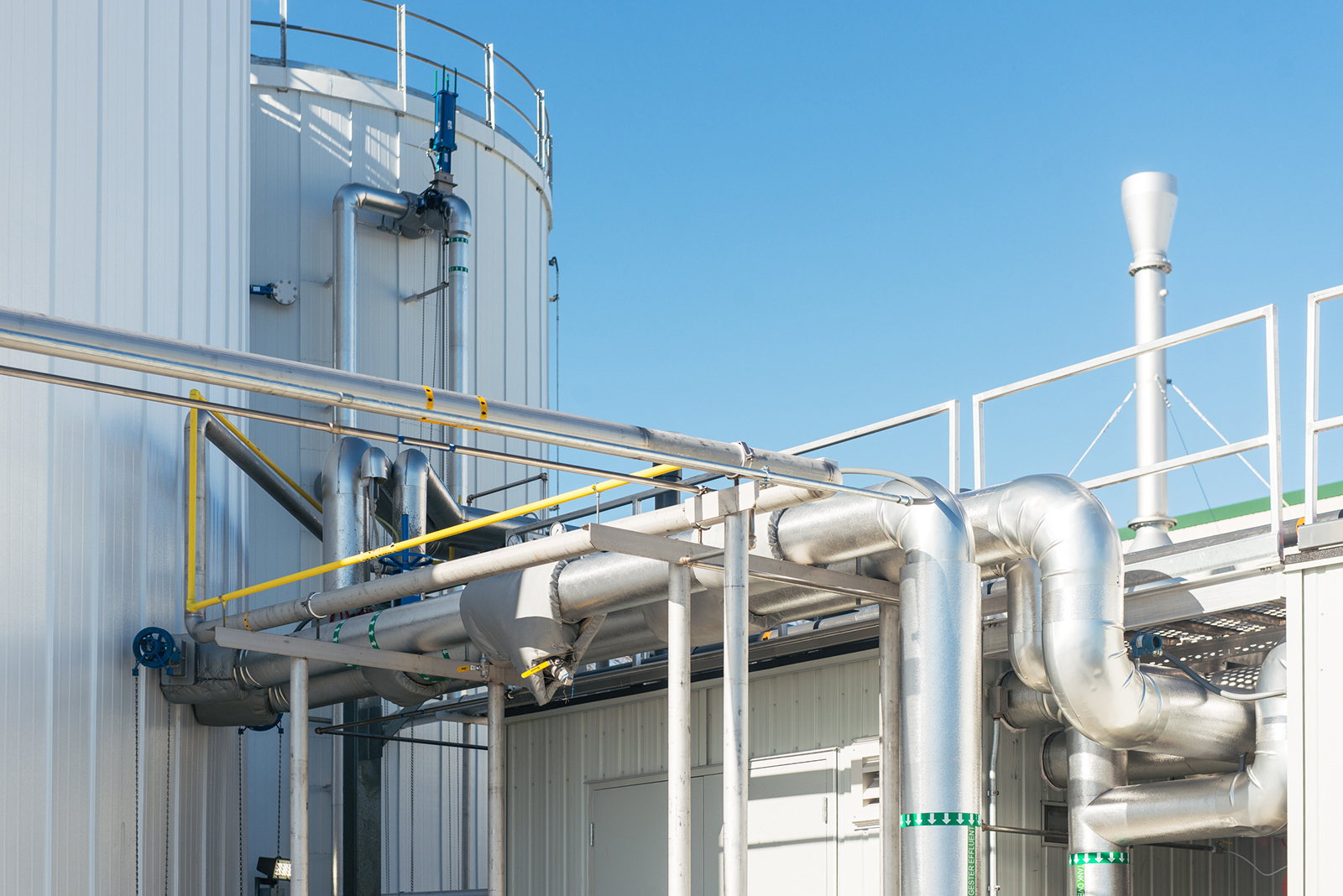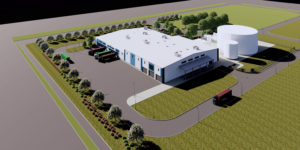Leading Impact Technology Company Divert, Inc. Brings Food Waste Fight to the Cincinnati Region

Nearly 40% of America’s food supply – that’s 325 pounds per person – ends up in the trash each year. This 60 million tons of annual wasted food accounts for up to 15% of U.S. methane emissions and 10% of global greenhouse gas emissions. With 12.8% of U.S. households considered food-insecure, according to the USDA’s Economic Research Service, there is a clear opportunity to address this crisis. One company on a mission to change that is Divert, Inc.
Founded in 2007 with the first-of-its-kind modular system to convert wasted food into energy, Divert is an impact technology company working to Protect the Value of Food™. With a network spanning over 6,600 customer locations throughout the U.S., Divert is making a tangible impact through its end-to-end solution that addresses all aspects of the food supply chain. The company maximizes the freshness of food and prevents waste via actionable data, recovers edible food to donate to communities in need and removes carbon from the value chain by converting wasted food into renewable energy.
In 2023, Divert announced plans to open 30 full-scale facilities that turn wasted food into renewable energy, with the goal to scale its solution to be within 100 miles of 80% of the U.S. population by 2031. Harrison, Ohio, is the next stop in Divert’s ambitious expansion plan to tackle food waste across the U.S. The Cincinnati region’s strong workforce, robust infrastructure, and long-standing food processing economy, contributing $3.5 billion in gross regional product (GRP), make it an ideal location for Divert’s future Integrated Diversion & Energy Facility. However, the region’s ongoing commitment to sustainability, renewable energy and addressing food insecurity also plays a critical role.
A Top Metro Region for Sustainability
Named a top metro area for sustainability by Site Selection Magazine and a “Top 100” U.S. city to commit to carbon neutrality, the Cincinnati region’s sustainability leadership makes it an attractive destination for both businesses and individuals. With Divert’s decision to build their Integrated Diversion & Energy Facility here, they join the ranks of dozens of major corporations prioritizing sustainability that have chosen to call the region home.
Sustainability is threaded into city planning, logistics and distribution hubs, and business partnerships across the three-state, 15-county Cincinnati region. Led by the Office of Environment and Sustainability, the Green Cincinnati Plan focuses on eight key areas: buildings and energy, city operations, community activation, food, mobility, natural environment, resilience and climate adaptation, and zero waste. The region’s leading sustainability alliance, Green Umbrella, also facilitates The Greater Cincinnati 2030 District organization working to accelerate the development of sustainable buildings across the metro region. Member companies have collectively committed to reducing their buildings’ energy use, water consumption and transportation commuting emissions by 50% by 2030.
“It’s never just one thing that leads us to a location. We look for a combination of infrastructure, logistical advantages, a robust and capable workforce and access to our customers,” says Chris Thomas, VP of Public Affairs for Divert. “But a welcoming community that focuses on and cares about sustainability is very important.”
A Local Response to Food Insecurity
A key component of Divert’s approach to tackling all aspects of the food supply chain is recovering edible food and donating it to communities in need. Since 2018, the company has donated the equivalent of over 11.7 million meals. Divert’s expansion to the Cincinnati region is a significant step in addressing local food insecurity. An estimated 270,000 individuals in the area struggle to access safe, nutritious food—a challenge exacerbated by recent inflation.
“Divert’s commitment to rescuing and redirecting edible food to our community aligns with the collective effort to foster prosperity and well-being for all across the region,” said Kimm Lauterbach, REDI Cincinnati president and CEO.

Divert employees supporting donations. (Provided by Divert, Inc.)
Divert’s commitment also aligns with the Zero Hunger | Zero Waste social and environmental impact plan and the “Fresh for Everyone” brand promise of Cincinnati-based food retail giant Kroger, which aims to increase access to safe, affordable food. Kroger has been a long-standing partner of Divert. Their successful 2010 collaboration on a Los Angeles facility, processing nearly 200 tons of food waste daily and still operating today, helped pave the way for Divert’s growth. Kroger’s strong local presence was another factor in Divert’s decision to build in Ohio. Together, Divert and Kroger will advocate for solutions to improve food access in the region and distribute edible food to local food banks, shelters and community organizations.
“Kroger is proud to collaborate with Divert to further our Zero Hunger, Zero Waste plan, which aims to end hunger in our communities and eliminate waste across our business,” says Keith Dailey, group vice president of corporate affairs and chief sustainability officer at Kroger. “Divert’s facilities are instrumental in supporting our operational efforts. Divert’s new facility in Ohio will greatly benefit our local communities by providing the necessary infrastructure to efficiently manage and recycle unsold organic products.”
A Thriving Renewable Energy Ecosystem
The Cincinnati region is rapidly transitioning into a renewable energy hub, aiming for a 100% clean energy future by 2035. The region already boasts the largest publicly accessible urban solar array in the country with a new 2.8 MW array at the Cincinnati Zoo and Botanical Garden. This addition boosts the Zoo’s total solar capacity to 4.36 MW, bringing it closer to its 2025 net zero energy goal. Beyond large-scale projects, the region fosters a thriving distributed generation ecosystem. Incentives and support drive the growth of numerous small-scale solar and other renewable energy systems for residential and commercial properties.
Divert’s upcoming Integrated Diversion & Energy Facility in Harrison perfectly complements this growing green ecosystem. Divert will divert millions of pounds of food from local landfills annually by converting non-donatable food waste into renewable energy through its proprietary depackaging and anaerobic digestion solutions. This innovative approach not only reduces waste but also generates clean energy.

A rendering of Divert, Inc.’s, Turlock, California, facility. (Provided by Divert, Inc.)
“Our mission to protect the value of food begins with data-driven strategies that stop waste at the source. We then maximize donations to local food banks,” says Thomas. “But for the remaining food that doesn’t meet donation guidelines, we turn it into renewable energy to be put back into the grid.” With a proven track record of processing 2.6 billion pounds of wasted food nationwide, Divert’s new facility also has the potential to produce nutrient-rich organic material for local farms.
Ohio’s deregulated energy market has been crucial in fueling the region’s renewable energy growth. Consumers have the freedom to choose renewable energy providers, which has boosted job creation and economic development and attracted green businesses. The Cincinnati area has seen a remarkable 9% job growth in the renewable energy sector since 2019, employing nearly 30,000 people.
Local leaders are enthusiastic about the positive impact of Divert’s facility and the region’s overall renewable energy efforts. “Transforming wasted food material into renewable natural gas energy underscores our region’s dynamic, advanced manufacturing sector and unwavering dedication to innovation,” said Lauterbach.
Tom Losekamp, president of the Harrison Township Board, emphasizes the Divert facility’s circular economy benefits. “We look forward to partnering with Divert for the benefit of the surrounding community and state. By locating near a farming area, any food produced by these farms may come back as food waste, turned into natural gas and sold to the residents to help improve their lives.”
A Collaborative Effort that Fuels Growth
Expanding a business to a new region requires strong support from local corporations, economic development agencies and government officials. These stakeholders work together to attract companies and provide the resources needed for success. The Cincinnati region is a prime example of this collaborative approach. Organizations like JobsOhio and REDI Cincinnati played a crucial role in Divert’s decision to locate its new facility here, serving as the front door to the region and assisting them through the process.
“Working with JobsOhio and REDI Cincinnati helped us see the value in the area and provided us with the support we needed early in the process. They assisted us with identifying potential sites and facilitating connections with local and state officials,” says Thomas. “They also provided valuable insight that allowed us to understand where and how we could connect to local utilities that could provide renewable energy from our facility.”
Once a company decides to expand operations in the Cincinnati region, it also benefits from an ongoing commitment by the area’s economic development partners, who strive to keep companies thriving and maintain Cincinnati’s status. Through its Business Retention and Expansion (BR&E) program, REDI Cincinnati will maintain ongoing contact with Divert to review successes and challenges. Divert will also collaborate with JobsOhio and other local economic development partners to identify available resources and the workforce needed to maintain the company’s continued growth in the region.
“Looking ahead is always part of what we do. The conversation doesn’t end once we’ve selected a site—it’s ongoing once the facility is open and we’re operating,” says Thomas. “There’s always a need to make sure the workforce matches our mission, and the region’s manufacturing and STEM talent will be central to what we do—from forklift operators and drivers to scientists working to ensure that wasted food conforms to the standards that allow us to turn it into energy.”
Now that Divert’s future Integrated Diversion & Energy Facility in Harrison, Ohio, has received zoning approval, the planning and development phase is underway. The company says it expects the facility to be operational in 2026. Through the new facility, Divert has committed to adding 50 new jobs to the region and a capital investment of $88.5 million.
“Divert’s presence not only fills a critical need for our community, region and the State of Ohio, but also strengthens our local economy and workforce. We look forward to supporting Divert’s growth and shared success in the years to come,” said Harrison Mayor Ryan Grubbs.
Ohio State Representative Cindy Abrams echoed this sentiment. “Not only will this project uplift our economy through job creation and technology advancement, but it will also protect our environment by reducing food waste. There is no doubt the Divert facility will continue to make Harrison a great place to live, work and raise a family,” she said.
